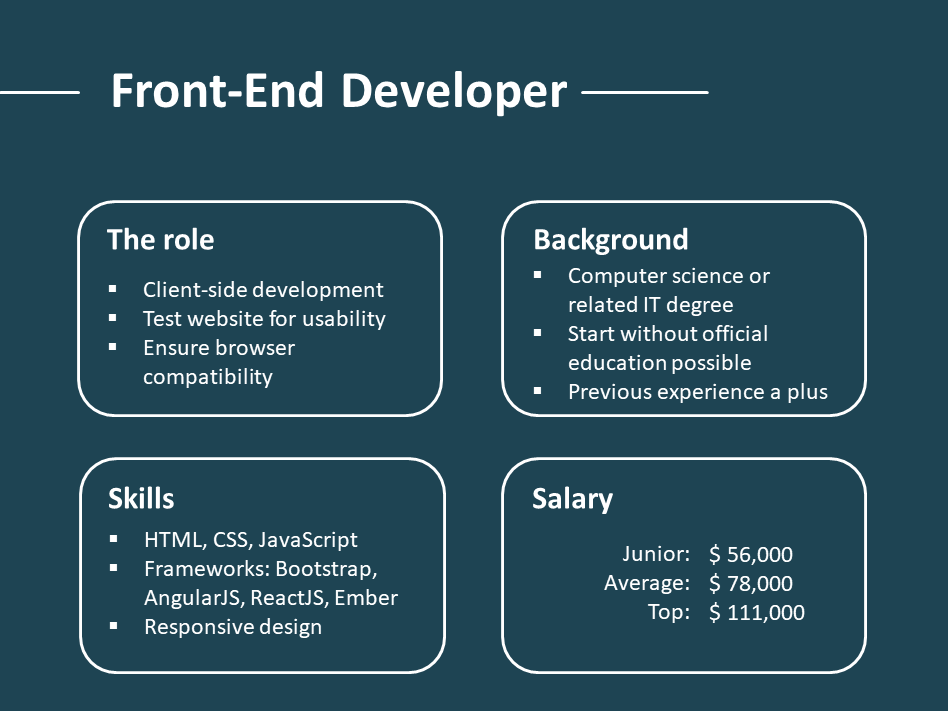Blitz News Digest
Stay updated with the latest trends and insights.
Behind the Curtain: Secrets of Back-End Development
Uncover the hidden world of back-end development! Dive into secrets that can elevate your coding skills and revolutionize your projects.
Understanding APIs: The Bridge Between Front-End and Back-End Development
Application Programming Interfaces, or APIs, serve as crucial connectors between front-end and back-end development. They allow different software components to communicate with each other, facilitating data exchange and enhancing user experience. In web development, the front-end refers to the part of the application that users interact with directly, while the back-end handles data processing, storage, and business logic. By utilizing APIs, developers can create dynamic applications that display real-time data without requiring users to reload the page.
Understanding how APIs work is essential for creating efficient web applications. Here are some key roles they play in bridging front-end and back-end development:
- Data Retrieval: APIs enable front-end applications to fetch data from servers seamlessly.
- Data Posting: They allow users to submit information, such as form entries, directly to the server.
- Authentication: APIs manage user authentication processes, ensuring secure access to resources.

Database Management 101: How to Efficiently Store and Retrieve Data
Database Management is a systematic approach to storing, managing, and retrieving data efficiently. In today's data-driven world, it is crucial for businesses and organizations to implement robust database systems that not only safeguard their data but also enhance accessibility. This involves choosing the right database management system (DBMS) that meets the specific needs of the organization, such as relational databases for structured data or NoSQL databases for unstructured data. Understanding data models, normalization, and indexing can significantly improve both performance and scalability, making it easier to handle growing datasets over time.
When it comes to efficient data retrieval, it's essential to implement well-designed queries that can quickly access and manipulate data. Utilizing indexes in a database can dramatically reduce the time it takes to locate records, while also optimizing the overall performance of the database. Additionally, regular maintenance practices, such as updating statistics and monitoring query performance, help in keeping the database running smoothly. By adopting these best practices, you can ensure that your database remains efficient and capable of handling the demands of modern applications, ultimately leading to enhanced user experience and operational success.
What Does a Back-End Developer Do? Key Skills and Responsibilities Explained
A back-end developer is responsible for managing server-side logic and the integration of the frontend part of the application. Their primary focus is to ensure that the application functions smoothly by creating, maintaining, and optimizing databases, servers, and APIs. To succeed in this role, back-end developers need a strong understanding of programming languages like Python, Ruby, and Java, as well as frameworks and tools used for building server-side applications. They often work closely with front-end developers to ensure seamless communication between the client and server.
In addition to programming skills, back-end developers must possess a set of key skills that enhance their efficiency and effectiveness. These include:
- Database Management: Proficiency in database technologies such as SQL and NoSQL.
- API Integration: Knowledge in creating and integrating APIs for data exchange.
- Version Control: Familiarity with tools like Git to manage code changes.
- Problem Solving: Strong analytical skills to troubleshoot issues that arise.
By mastering these skills, back-end developers play a crucial role in delivering dynamic and responsive web applications.